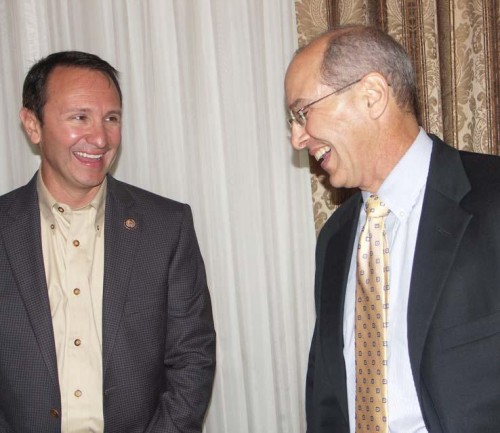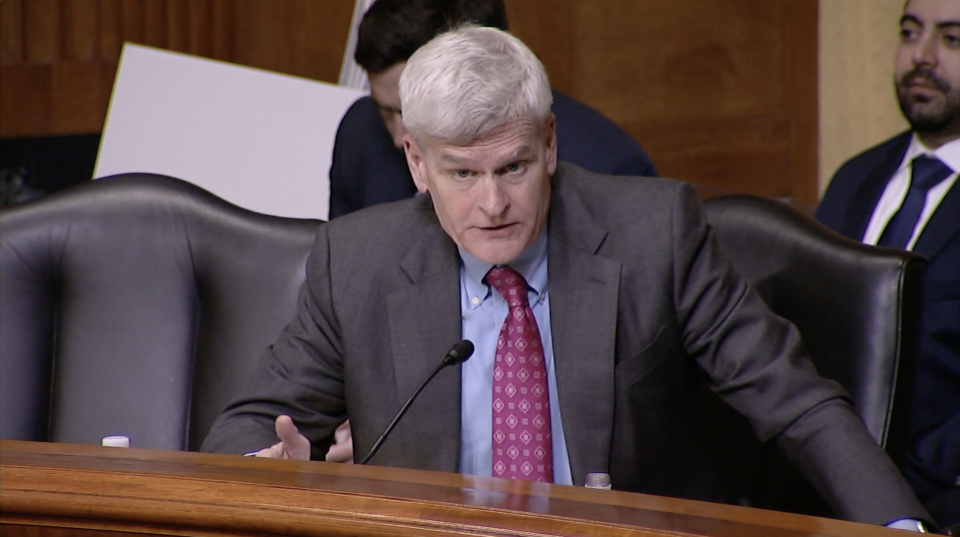
Landry seen as underdog to Boustany
February 7, 2012Joseph Clovis Autin
February 9, 2012So far, Gov. Bobby Jindal, flush from his re-election last fall, has chosen two pro-business groups to announce sweeping reform efforts for his second term, unveiling his education reform at the annual meeting of the Louisiana Association of Business and Industry and proposed state employee pension plan changes to the Baton Rouge Rotary Club.
Selecting friendly venues for major announcements seems to be the preferred method for Jindal who wisely eschewed teachers groups and state employee gatherings to unveil his agenda. Louisiana Public Service Commission (PCS) Chairman Foster Campbell observed that had he revealed his proposed pension program to state employees, “they’d have booed him out of the room.”
And while he has yet to address state corrections, it is a near certainty he has state prison privatization squarely in his crosshairs.
Recently, the Florida Senate Budget Committee, at the urging of Jindal’s fellow Republican Gov. Rick Scott, passed a bill to privatize 29 South Florida prisons—to turn them over to for-profit companies that would be required to produce cost cuts of 7 percent below the cost of state-run facilities.
That bill gives the Florida governor far-reaching powers to expand privatization to other agencies. Under the latest proposals, an agency would not have to report its privatization of a program until after a contract is signed. The bill also will eliminate the legal requirement to perform a cost-benefit analysis before privatizing any governmental function.
Even though last year’s efforts to privatize two state prisons failed, Jindal is likely to make a second effort this year. Thus, it is worthwhile to take a look at the dollars and cents of privatizing prisons.
Of the 50 states, Louisiana sits alone at the top with the highest prison incarceration rate in the nation at 858 per 100,000. Mississippi is second at 749 per 100,000.
In absolute numbers, Louisiana ranked 11th in the nation in actual prison population in 2007 (37,341) even though the state was 25th in population. Those numbers likely have only increased in the past five years. From 1990 to 2004, Louisiana’s prison population nearly doubled, increasing by 98.6 percent, from 18,600 to 36,900, federal records show.
The U.S., with more than two million prisoners, ranks highest in the world, nearly half-a-million more than number-two China. The U.S. also has the highest per capita number of prisoners with 715 per 100,000. Russia is a distant second with 584 prisoners per 100,000 population.
Accordingly, if the U.S. has the highest rate of imprisonment in the world and Louisiana has the highest rate in the U.S. that gives Louisiana the highest rate of imprisonment in the world.
So, what does all this mean in the terms of costs to house, feed and care for all these prisoners? That, after all, would appear on the surface to be the consideration uppermost in Jindal’s mind: saving the state beaucoup money.
In August of 2011, the Vera Institute of Justice, with offices in Washington, D.C., New Orleans and New York City, conducted a survey to determine the total cost of prisons in fiscal year 2010. Forty of the 50 states responded to the survey which provided some rather interesting figures.
Louisiana had a per prisoner cost of $17,486 in 2010, fourth lowest of the 40 responding states. By comparison, Kentucky’s annual cost per prisoner was $14,603 and Alabama’s was $17,285.
Louisiana’s annual cost per prisoner paled in comparison to several other states. Florida ($20,553), Georgia ($21,039), Texas ($21,390, Missouri ($22,350), Arkansas ($24,391), Arizona ($24,895), Ohio ($25,814), and North Carolina ($29,965) all had higher annual per-prisoner costs.
Five other states’ annual costs per prisoner soared. Illinois had an annual per-prisoner cost of $38,268, followed by Pennsylvania ($42,339), California ($47,421), New Jersey ($54,865) and New York ($60,076), nearly three-and-one-half higher than Louisiana’s.
The one statistic that Jindal is almost certain to roll out when he makes his inevitable push to privatize Louisiana’s prisons will be the cost per taxpayer. So, let’s take a look at those numbers as well.
Of the 40 responding states, 15 did in fact have lower costs than Louisiana’s per-taxpayer cost of $698.40. In North Dakota, for example, the per-taxpayer cost was a paltry $58.10. Others, like Oklahoma ($453.40), Alabama ($462.50) and Missouri ($680.50) were closer to Louisiana’s figures.
Then there are states like Arizona ($1,003.60), Georgia ($1,129.90), North Carolina ($1,204.70), Michigan ($1,268), Ohio ($1,315.50), New Jersey ($1,416.70), Illinois ($1,743.20), Pennsylvania ($2,044.30), Florida ($2,082.50), Texas ($3,306.40), New York ($3,558.70), and California ($7,932.40).
Florida’s per-taxpayer cost of housing and caring for prisoners is three times Louisiana’s cost. The per-taxpayer rate for Texas is 4.7 times Louisiana’s rate and New York’s rate is five times Louisiana’s per-taxpayer rate. And then there is California where the per-taxpayer rate of $7,932.40 is a whopping 11.3 times that of Louisiana.
So, just how will Jindal sell his economic plan for prisons when so many states have both higher per-prisoner and per-taxpayer costs associated with housing, feeding and caring for prisoners?








